Buy Taiko no Tatsujin: Rhythm Festival
In 2018, Taiko no Tatsujin: Drum Session was released for the PS4, and Taiko no Tatsujin: Drum 'n Fun came out on the Nintendo Switch. The approaches and song lists differed, but they were essentially the same game. In 2022, Taiko no Tatsujin: The Drum Master made it to the Xbox One and PC via the Windows Store, completing the series' journey into becoming a multiplatform title. You get the sense that the Switch is the real home for the series, as it also got Taiko no Tatsujin: Rhythmic Adventure Pack in 2020. With the other platforms still stuck on their original releases, the Switch has received its fourth game with Taiko no Tatsujin: Rhythm Festival. While it lacks some things that were in Drum 'n Fun, it is also ambitious in some areas.
The core game is reminiscent of just about every other rhythm title. There's a note highway situated in the middle of the screen, with notes coming from the right side to the left. Red notes mean you hit the center of the drum, while blue notes mean you hit the outer rim of the drum. The drum recognizes left and right sides separately, and while you can hit either side to have the note count, larger versions of the notes require you to strike both sides simultaneously. Beyond that, yellow notes come in three forms: a balloon to inflate, a long note bar, and a golden hammer. In all three cases, you'll need to drum roll by striking any part until the note line ends or the required number of hits is met.
As always, the games are best played with a taiko drum controller, and if you were willing to go the distance and import one, you'll be set. Unlike before, the drums can now be purchased directly from the Bandai Namco store, so even though you still can't walk into a GameStop and grab a drum, it's a little easier to procure this time around. If you're not willing to drop the cash to grab another plastic instrument, then you have three other options on the Switch. Using the traditional button method either via the Joy-Cons or the Pro Controller might not be the most exciting way to play unless you're playing songs at higher difficulty levels, but it is the most accurate if you're trying to aim for higher scores. The touch-screen can be used in handheld mode, and like the normal buttons, it is highly accurate and more fun since it feels like hitting an actual drum. The only issue is that you need the Joy-Cons attached to the console to function. Finally, there are motion controls, which might seem neat as a gimmick but are so inaccurate that it isn't even recommended to use for songs at the easiest difficulty.
The main mode is the Taiko mode, which immediately gives you access to 77 songs, with three more unlocked if you have save data from Drum 'n Fun (you get nothing for having a save from the Rhythm Adventure duo of games, though). Like before, there are multiple categories at your disposal, including anime, classical, pop and vocaloid, and the choices for tracks are quite inspired this time around. It's almost all Japanese stuff, so don't expect any Northern American pop hits, but there is a Blackpink song, Megalovania, and the theme from Sailor Moon. Since this us a Switch exclusive, there are also a few themes from Kirby, The Legend of Zelda and Super Mario Bros. New to the series is the ability to practice entire songs and song sections, with pointers and assists to help you conquer the tricky parts. For a game that is predominantly a two-note affair, the note charts can get surprisingly tricky, and the assists ensure that you'll get better at the game (beyond repeating the songs on your own).
The boldest move is the presence of a Song Pass, which is a 30-day pass that costs $3.99, while $9.99 gives you a 90-day pass. There is a seven-day free pass for those who want to try it before paying for the first time. Doing this gives you access to a library of downloadable songs from the existing games and a few new ones. It's similar to what the Just Dance series does, and for Taiko no Tatsujin fans, it becomes tempting since the library is currently at 584 songs, with more promised each month. The good news is that it does cover a wide variety of categories, so there's still plenty of tracks to choose from if you just want the vocaloid or video game stuff versus the classical genre. Depending on how often they update the list, it can be a good investment if you plan on practicing for high scores or want this as a centerpiece for get-togethers.
If you were fond of the minigames in Drum 'n Fun, then you'll be disappointed that they're absent here. In lieu of that, two new modes may please fans. The first is a band mode, which lets you and three other local players play one song together. Each person is in charge of their own note highway, but there are moments when you'll all cooperate in hitting one long note string or all hit one note at the same time. It's a nice enough diversion from the standard versus mode that almost every iteration has used for the multiplayer experience.
The second mode is a more ambitious one named Great Drum Toy War. This is limited to two players and initially plays out like a standard versus match where both players play to one song in the hopes of beating their opponent. The twist is that you're trying to fill up meters to place your toys on the field first to outnumber your opponent's toy count by the end of the song. Toy selection becomes important, as each one has their own abilities, from giving you more energy per note so you can place a toy on the field faster to outright destroying an opponent's toy on the field. You get new toys and arrange your loadout before each match, so the mode becomes addictive, and the missions mean that players have a second campaign to keep them busy if they tire of aspiring for higher scores in the standard taiko mode.
Online mode is fine but feels a bit bare-bones. You can select your preferred song for versus or co-op play beforehand, and you can do the same for Great Drum Toy War. You meet up with your opponent, and you play whichever song gets randomly selected. To its credit, the online mode performs well without any hint of lag, so any missed notes can't be blamed on the network. You also have the chance to play at your own preferred difficulty level independent of your opponent, so you're never at the mercy of a match where notes are too fast or where things aren't interesting due to too few notes.
Governing all of this are two different systems in charge of very different things. Completing just about any mode gives you coins to spend at the in-game shop. Unless you're into customizing your sound effects, player profile, or taiko character, you're not going to be interested in most of the stuff here, but if you're a fan of Great Drum Toy War, you'll buy up the different toys to expand your arsenal. The actual character leveling system is more important, but it only activates when you're playing the normal Taiko mode or Great Drum Toy War.
Most of these grant more coins and other cosmetics, but this is also where you advance the story of how DON-chan and Kumy-kyun meet up in Omiko City in hopes of becoming a taiko master and discovering their secret power, respectively. The story is fine, and the cut scenes aren't too exciting, but they sometimes afford the opportunity to perform new songs and unlock them for play elsewhere. The good news is that you decide when to initiate the leveling, but you'll cap at five stored levels before you need to spend the unlocks.
Much like the core gameplay, the graphics are very good and completely unchanged from the first Switch entry. The actual note line is easy to read, and the colors are distinct enough that there's little chance of mistaking which button or drum side to hit. The rest of the environment is a cacophony of chaotic glee, as your performance causes more dancers to appear before a crowd starts bouncing to your success. By the end of a good performance, the scene is lively, and the joy is infectious, so you'll want to immediately play another song to see it all happen again. You don't even have to be a fan of the spoken Japanese that repeats when you unlock a plethora of rewards.
Taiko no Tatsujin: Rhythm Festival proves to be another solid entry in the series. In terms of quantity and variety, the default song list is on the same level as Drum 'n Fun, and while the DLC will pad things out, the 30- and 90-day song passes do a much better job of making this feel like the most packed entry yet. The removal of minigames is a bit disappointing for those who liked them, but Great Drum Toy War and its strategic elements more than make up for it. It's a much better experience if you're willing to shell out for the drums, but even if you don't, you'll have fun with Rhythm Festival if you're a big rhythm game fan who isn't too hung up on grooving to familiar Western pop hits.
Score: 8.0/10
More articles about Taiko No Tatsujin: Rhythm Festival


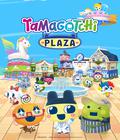
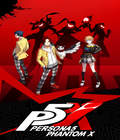
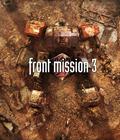
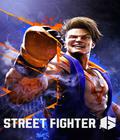
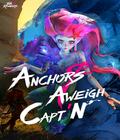
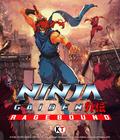
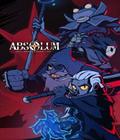
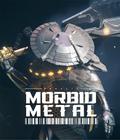

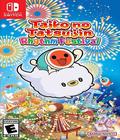 Taiko no Tatsujin: Rhythm Festival invites players to put your rhythmic skills to the test and light their drumming spirit on fire!
Taiko no Tatsujin: Rhythm Festival invites players to put your rhythmic skills to the test and light their drumming spirit on fire!
















